Milcah in the Bible, often overlooked, played a crucial role in biblical lineage, offering insights into women's roles in ancient narratives.
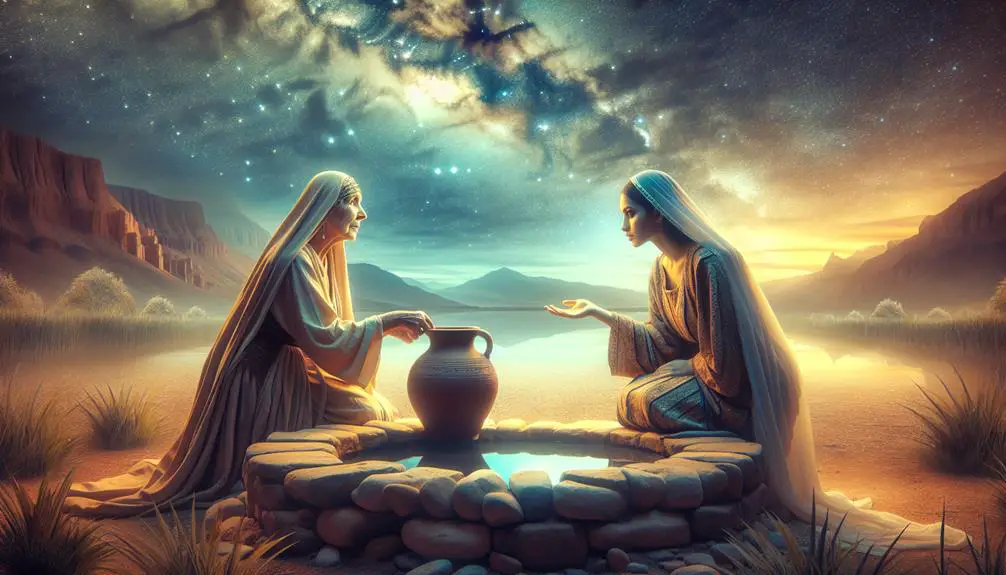
Milcah in the Bible
Imagine you're tracing your family tree and stumble upon a relative who played a pivotal role in your lineage but remains largely overlooked. That's Milcah in the Bible. You know she's Nahor's wife and the mother of eight, but what else do you know about her?
Her story, nestled within genealogies, holds more than just names; it carries implications about cultural and societal roles in her time. As you consider her significance not only in biblical genealogies but also in interpretations through time, you might wonder how her legacy shapes modern discourse on women in biblical narratives.
What insights could her story offer today?
Key Takeaways
- Milcah, Nahor's wife, is a significant yet underrecognized figure in biblical genealogy and history.
- Her marriage to Nahor and motherhood of eight sons underscore the importance of women's roles in biblical narratives.
- Milcah's lineage and descendants reveal complex familial ties, highlighting her impact on theological and societal constructs.
- Interpretations of Milcah's story evolve, offering insights into gender dynamics and the cultural context of the Bible.
Who Was Milcah?
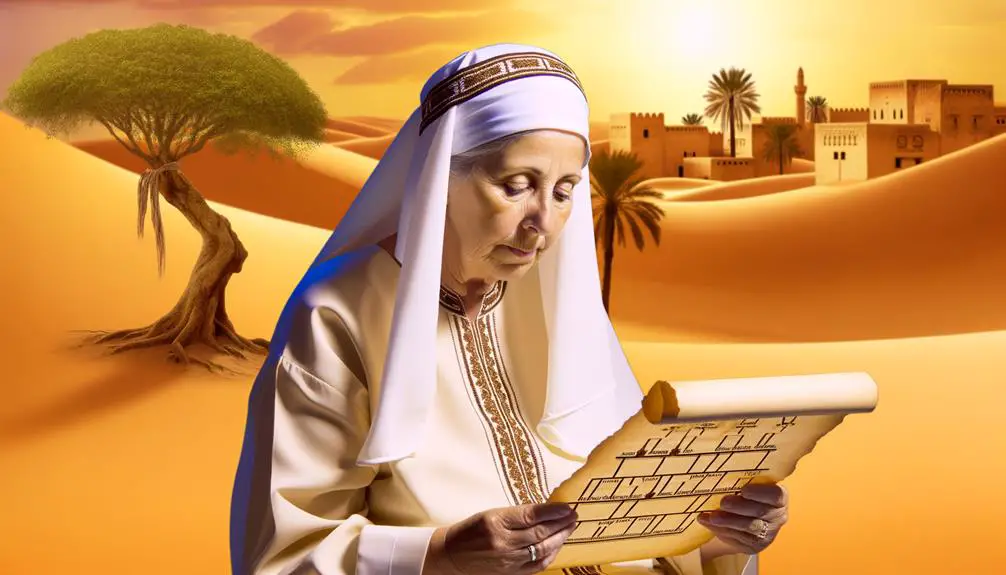
In the biblical narrative, Milcah emerges as a significant yet often overlooked figure, known primarily as the wife of Nahor, Abraham's brother, and the ancestor of several prominent tribes. You'll find that Milcah's virtues are subtly woven into the text, reflecting her importance not just within her immediate family but also in the broader context of biblical history. She's depicted as a linchpin in the genealogical continuity between Abraham and his descendants, highlighting her role in the perpetuation of the covenantal lineage.
Analyzing Milcah through a scholarly lens, you encounter a figure who embodies the virtues of loyalty and steadfastness. These characteristics aren't explicitly stated but are inferred from her position and the roles she fulfills. Her significance is further underscored by archaeological evidence, which, while sparse, offers intriguing glimpses into the era and social milieu Milcah inhabited. This evidence, ranging from inscriptions to material culture, provides a backdrop against which her life can be better understood.
The archaeological findings, though not directly mentioning Milcah, help scholars piece together the puzzle of her existence and the world she lived in. They underscore the importance of women like Milcah in maintaining and nurturing the familial and tribal connections that were crucial for survival and identity in ancient times. Through this lens, Milcah transcends her textual mention, becoming a symbol of the vital yet often unacknowledged roles women played in biblical history.
Milcah's Family Background
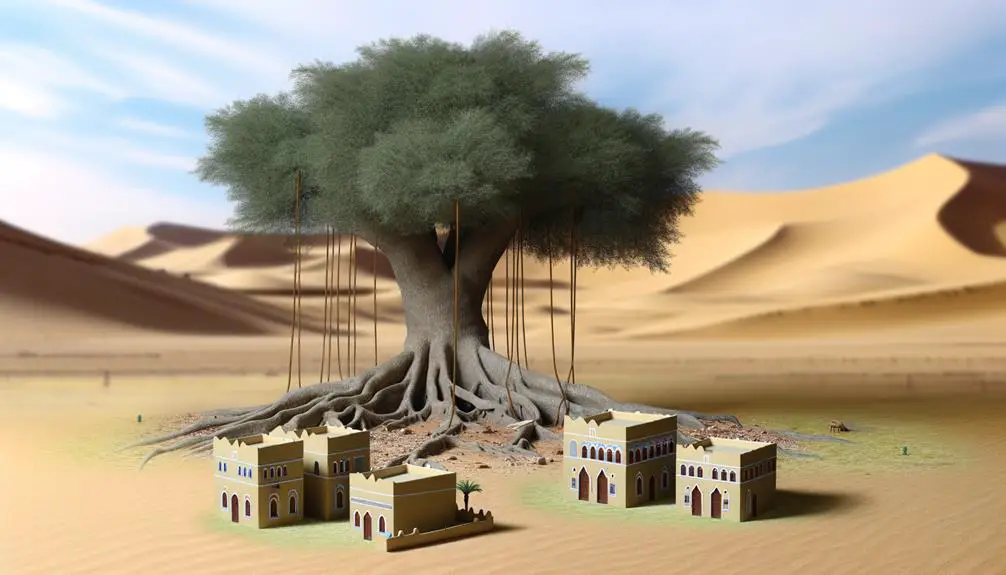
You'll find Milcah's genealogical roots deeply embedded within the tapestry of biblical narratives, highlighting her as a figure intertwined with notable relatives.
Her lineage not only illuminates her own story but also offers insights into the broader familial dynamics at play in ancient texts.
This exploration into Milcah's family background reveals the intricate connections and significant roles her relatives held, underscoring her importance in biblical history.
Milcah's Genealogical Roots
Tracing Milcah's genealogical roots reveals her as the daughter of Haran and the wife of Nahor, situating her firmly within a pivotal family lineage that significantly influences the broader narrative of the Hebrew Bible.
Here are three critical aspects to consider:
- Ancestral implications: Her lineage positions Milcah at a crucial intersection of familial and divine narratives, highlighting her role in the unfolding of biblical genealogies.
- Biblical mentions: Milcah's appearances, though sparse, are strategically placed, underscoring her significance within the text's genealogical records.
- Cultural context: Understanding Milcah's roots offers insights into the social and theological constructs of her time, providing a richer understanding of her place within the biblical narrative.
These elements underscore the depth of Milcah's genealogical and narrative importance in the Hebrew Bible.
Notable Relatives
Delving into Milcah's family background uncovers a web of notable relatives, each contributing uniquely to the theological and familial narratives within the Hebrew Bible. Milcah, married to Nahor, Abraham's brother, stands at the confluence of pivotal lineages, her offspring founding tribes integral to Israel's story. This familial nexus isn't just a historical or religious footnote; it's a testament to the enduring threads that weave through generations, impacting spiritual and societal norms.
Moreover, Milcah's hobbies, although not explicitly detailed in biblical texts, could be inferred from the cultural and domestic practices of her time, offering a lens into the daily life and social fabric of her era. Her story, and those of her relatives, hold contemporary relevance, highlighting themes of faith, family, and the roles women play in nurturing and sustaining cultural and religious identity.
Marriage to Nahor
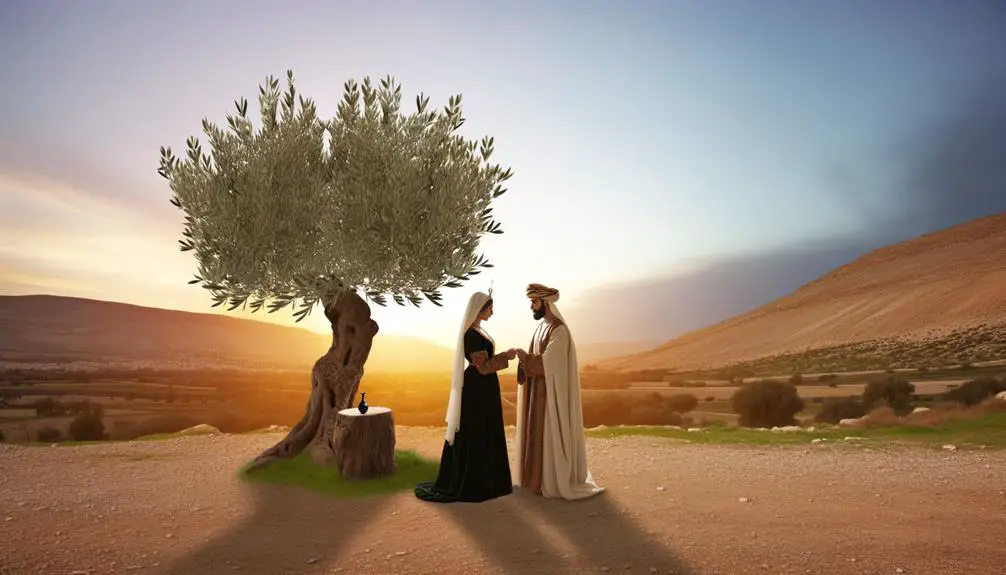
Milcah's marriage to Nahor, Abraham's brother, represents a pivotal union within the genealogical framework of the biblical narrative, underscoring complex familial and social dynamics of the time. This union not only highlights the intricate relationships within this foundational family but also sheds light on the broader implications of marriage customs and Nahor's lineage in ancient times.
When you delve into the specifics of Milcah's marriage, several key aspects emerge:
- Nahor's Lineage: Milcah's marriage to Nahor wasn't just a personal union but a strategic alliance that reinforced Nahor's lineage. It ensured the continuity of his bloodline, which was crucial in a time when lineage determined social standing, inheritance, and divine favor.
- Marriage Customs: The marriage between Milcah and Nahor provides insight into the marriage customs of their time. Marriages were often arranged to strengthen familial bonds, secure alliances, and ensure the prosperity of the lineage. It's clear that their marriage was deeply embedded within the social fabric of their community, serving multiple societal and familial purposes.
- Socio-Religious Context: The union between Milcah and Nahor also reflects the socio-religious context of their era. Marriages weren't only social contracts but also held religious significance, often seen as fulfilling divine promises or commands. This aspect of their marriage emphasizes the role of faith in guiding personal and familial decisions.
Her Children and Legacy
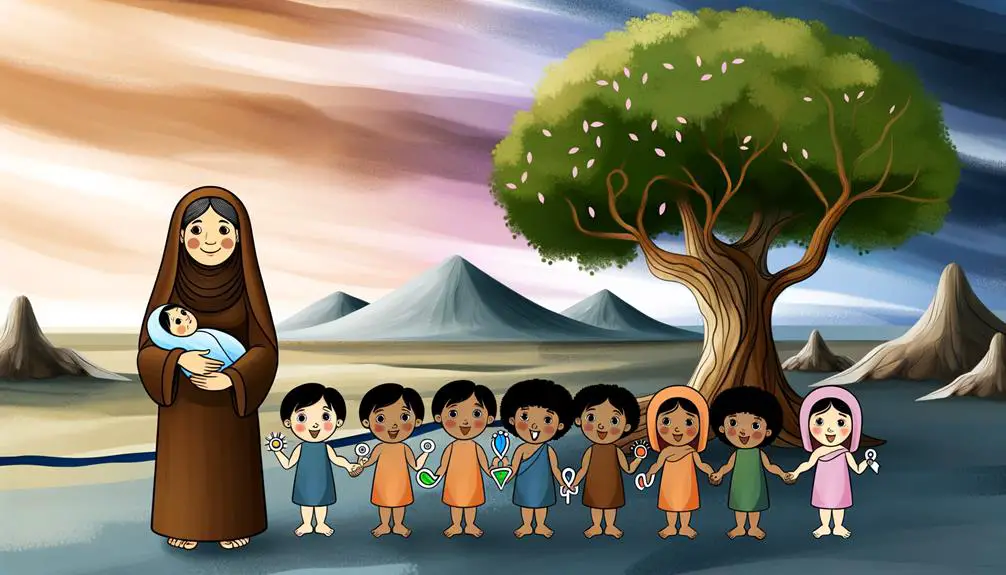
Exploring the lineage further, Milcah and Nahor's union bore significant fruit, resulting in the birth of eight sons, which not only perpetuated Nahor's lineage but also intricately wove Milcah into the fabric of biblical history through her descendants. This proliferation of offspring underscores the importance of family dynamics in ancient times, particularly in the context of carrying forward familial and religious legacies.
The narrative of Milcah's children isn't merely a recounting of genealogical facts; it's a reflection of the societal and religious norms of the era. Each son's life and lineage further complicated the intricate tapestry of familial relationships that characterized the biblical narrative. These relationships, marked by alliances and conflicts, significantly influenced the spiritual and territorial developments of their times.
Moreover, religious interpretations of Milcah's legacy often emphasize the role of women in biblical history as vital conduits of lineage and faith. Through her sons, Milcah contributed to the shaping of future generations, both in terms of their physical lineage and their spiritual inheritance. This dual contribution highlights the multifaceted role of women like Milcah, who, despite being less prominently featured, played crucial roles in the unfolding biblical saga.
Analyzing Milcah's legacy through her children offers insights into the complex interplay between family dynamics and religious beliefs in ancient biblical times. Her story underscores the significance of women in maintaining and propagating familial and religious identities, reminding us of the layered and interconnected nature of biblical narratives.
Significance in Genealogies
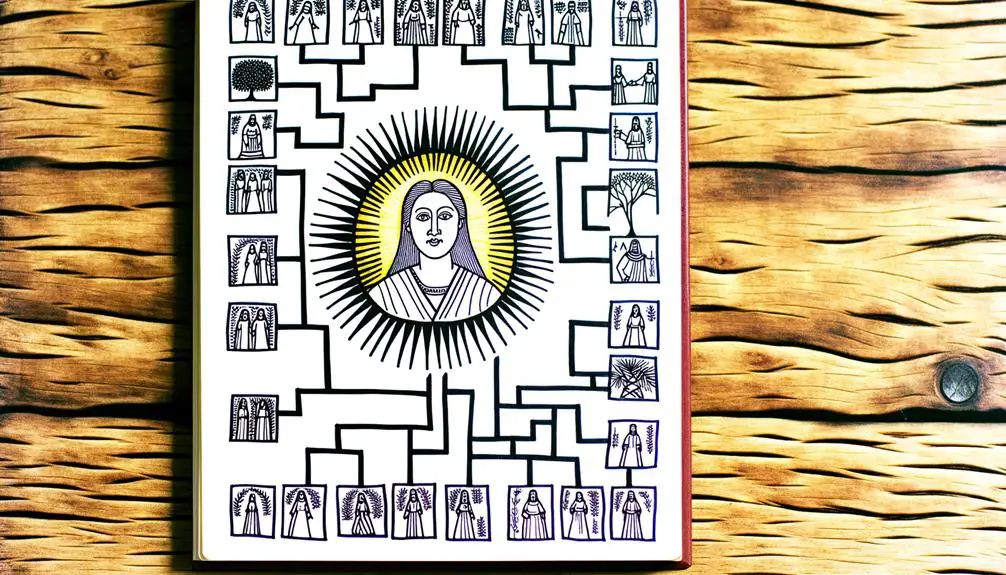
You'll find that Milcah's role in genealogies isn't just a matter of listing ancestors; it's a testament to her influential lineage within biblical narratives.
Her descendants' impact underscores the interconnectedness of various biblical figures, revealing complex familial and tribal relationships.
Analyzing these genealogical connections offers insights into the broader socio-religious framework of the time, highlighting Milcah's significance beyond mere progeny.
Genealogical Connections Explored
Within biblical genealogies, Milcah's lineage holds significant implications for understanding familial and tribal connections in ancient Hebrew narratives. Your exploration into Milcah's genealogy reveals:
- Archaeological Evidence – Excavations and historical documents provide tangible proof of the tribes and families mentioned alongside Milcah, underscoring her role in the broader socio-political landscape of the time.
- Theological Perspectives – Scholars interpret Milcah's place in the genealogies as indicative of divine design and purpose, offering insights into the religious and moral values of the period.
- Inter-tribal Relationships – Milcah's connections highlight alliances and rivalries, informing our understanding of the complex web of relationships that shaped the history and narratives of the ancient Hebrew people.
Milcah's Descendants Impact
Milcah's descendants significantly shape the genealogical landscape of biblical narratives, revealing complex familial ties that influence both historical and spiritual legacies. Through her lineage, you'll find a web of relationships that not only define but also propel the unfolding of ancestral narratives.
Milcah's influence isn't just a footnote in these stories; it's a cornerstone, intricately woven into the fabric of the biblical genealogy, highlighting the importance of women in preserving and transmitting cultural and religious heritage. Her descendants act as pivotal figures, connecting various tribes and families, thereby underscoring the interconnectedness of human experience within the biblical context.
This intricate network of relationships underscores the significance of Milcah and her lineage, emphasizing the depth and breadth of her impact on the ancestral narratives.
Cultural and Societal Role
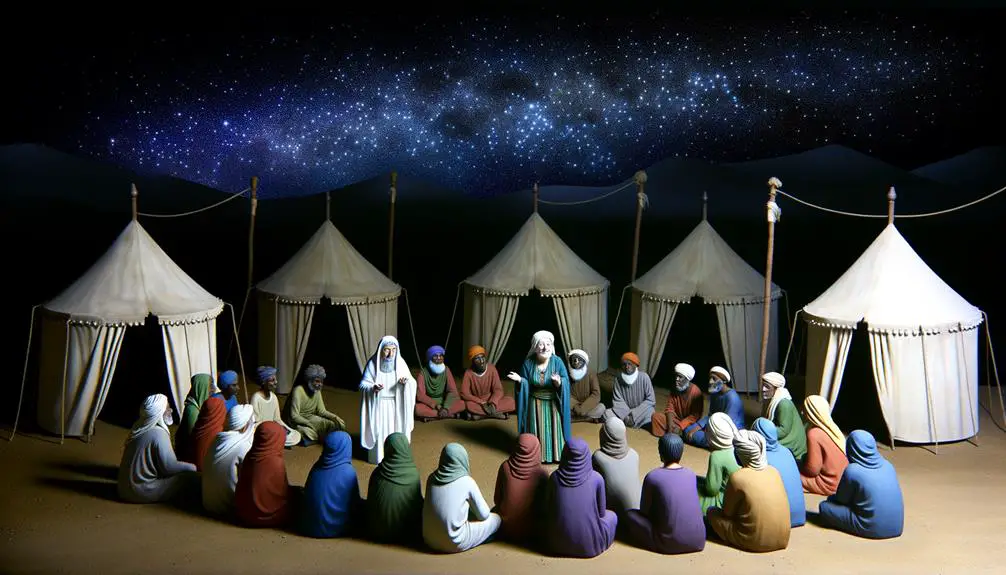
In analyzing the cultural and societal role of Milcah in the Bible, it becomes evident that her story reflects broader themes of lineage and women's roles in ancient societies. You'll find that Milcah's narrative isn't just a tale from the past; it's a lens through which we can view and understand the intricate fabric of societal norms and expectations placed upon women in biblical times.
Here are three key aspects to consider:
- Lineage and Legacy: Milcah's importance in biblical narratives is significantly tied to her role in lineage and legacy. You see, in a time when lineage was primarily traced through males, the mention of women like Milcah underscores their crucial role in the continuation of familial lines and the preservation of heritage.
- Women's Roles in Society: The story of Milcah provides insight into the societal norms governing women's roles. Despite the patriarchal structure of ancient societies, women like Milcah had significant albeit often unacknowledged contributions to their communities and families. Her story highlights the delicate balance women navigated between familial obligations and their personal identities.
- Societal Norms and Expectations: Milcah's life sheds light on the societal norms and expectations of women. Through her, you gain an understanding of the dynamics within families and societies, and how women's identities were shaped and defined in relation to their male counterparts.
In essence, Milcah's narrative serves as a crucial piece in the puzzle of understanding the cultural and societal fabric of ancient times. Through her story, you're invited to explore the complexities of women's roles and societal norms, providing a nuanced perspective on the historical and cultural context of the Bible.
Interpretations Through Time
Over time, scholars and theologians have grappled with the evolving interpretations of Milcah's story, exploring its significance in various cultural and historical contexts. Initially, her narrative may have been viewed through a traditional lens, emphasizing her role within patriarchal structures. However, as societal norms and academic perspectives shifted, so too did the interpretations of her story.
Feminist reinterpretations have played a pivotal role in this evolution. You'll find that scholars leveraging a feminist lens have sought to uncover the often-overlooked agency and significance of women like Milcah in biblical texts. They've argued that her story, far from being a mere backdrop to the actions of men, offers insights into the resilience and spirituality of women in ancient times. This perspective challenges traditional readings, suggesting that Milcah's narrative can be a source of empowerment and inspiration for women today.
Theological symbolism, too, has been a critical focal point. Theologians have delved into the symbolic meanings behind Milcah's actions and relationships, exploring how they reflect broader theological themes. For instance, Milcah's marriage within her family line has been interpreted as symbolizing the continuity and purity of the faith community. This symbolic reading enriches our understanding of the text, revealing layers of meaning that speak to enduring spiritual concerns.
As you delve deeper into Milcah's story, you'll find a rich tapestry of interpretations that reflect the changing lenses through which we view ancient texts. These evolving perspectives offer a more nuanced and complex understanding of her narrative, highlighting its relevance across the ages.
Milcah in Modern Discourse
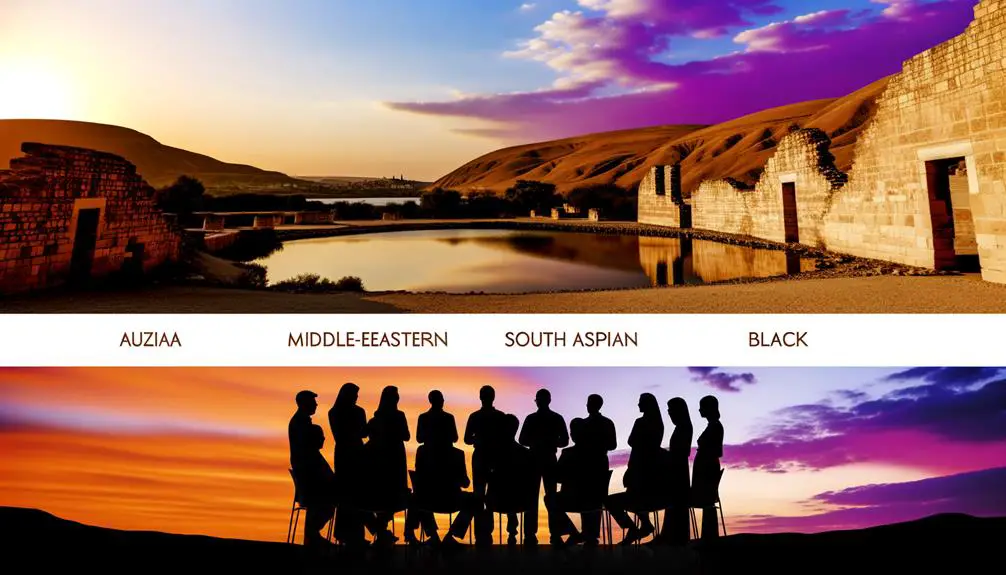
Engaging with modern discourse, scholars have noted how Milcah's narrative resonates with contemporary themes of gender dynamics and historical reinterpretation. This analysis brings to light several key points:
- Feminist Perspectives:
- You'll find that feminist scholars have critically analyzed Milcah's story, viewing her not just as a figure in a patriarchal society but as a character with agency and significance. They argue that her role, although seemingly peripheral, underscores the complexity of women's lives and their contributions to biblical history. This approach challenges traditional interpretations, suggesting that women like Milcah played a more substantial role than previously acknowledged.
- Artistic Representations:
- Artists and storytellers have rediscovered Milcah, incorporating her into various forms of media. Through paintings, literature, and digital art, they reimagine her story, often emphasizing her strength and resilience. These artistic representations serve not only as a testament to her enduring legacy but also as a means of exploring and questioning historical narratives.
- Educational Impact:
- In modern religious and secular education, Milcah's story has become a tool for discussing broader themes such as heritage, faith, and the interpretation of ancient texts. By examining her life, students and readers are encouraged to think critically about the sources of our historical and cultural knowledge and to consider the perspectives of those who've traditionally been marginalized.
Through these lenses, Milcah's narrative becomes a rich source for discussion and analysis, bridging the ancient and the modern. Her story, while rooted in the past, continues to inspire and provoke thought in today's world, demonstrating the power of biblical narratives to speak to contemporary issues.
Frequently Asked Questions
How Has the Name "Milcah" Influenced Contemporary Naming Trends Within Various Cultures?
You've noticed that the name 'Milcah' hasn't made a significant mark on contemporary naming trends across cultures. Despite its historical roots, it hasn't prominently influenced modern naming conventions or had notable cultural impacts.
While some names from ancient texts do resurface in popularity, Milcah remains relatively obscure in today's diverse naming landscape. Its usage remains minimal, suggesting its influence is more of a historical footnote rather than a trendsetter in current naming practices.
Are There Any Notable Artworks or Literary Pieces From the Renaissance Period That Depict Milcah's Story or Character?
You're exploring Renaissance artworks and literary pieces, specifically seeking stories of strength and subtlety. Surprisingly, Milcah's tale, though rich, rarely resonates in Renaissance portraiture or literary adaptations.
This period, celebrated for reviving classical antiquity, often overlooked such biblical figures in favor of more prominent characters. Your analysis reveals a gap in representation, suggesting Milcah's narrative, while influential, didn't capture the creative imagination of Renaissance artists and authors as other stories did.
How Do Different Jewish and Christian Denominations View and Teach About Milcah's Role and Significance in Biblical Narratives Today?
You'll find Jewish and Christian denominations offer varied perspectives on her role, highlighting her genealogical significance and interfaith interpretations. Scholars within Judaism might emphasize her contribution to lineage, while Christian interpretations could focus on theological implications.
This divergence enriches the dialogue around her, showcasing the depth of biblical narratives. Understanding these differences requires a detailed, analytical approach, fostering a comprehensive grasp of her place in religious discourse.
Has Milcah Been the Subject of Any Feminist Theological Critique, and if So, What Are the Main Points of Contention or Praise?
Imagine a scale, one side weighs gender dynamics, the other, theological interpretations. You're examining how these scales balance when feminists critique religious narratives.
Yes, Milcah has sparked feminist theological critique, focusing on gender dynamics within these stories. Critics praise her role as a subversion of traditional gender roles, while others question the depth of her portrayal.
They delve into the nuances of her story, analyzing how it reflects or challenges contemporary gender discussions.
Are There Archaeological Findings That Can Be Directly Linked to Milcah or Her Immediate Family, and What Insights Do They Offer About Her Time and Society?
You're diving into whether archaeological digs and analyses of cultural artifacts have shed light on a historical figure and her era. Through excavation methodologies, experts unearth insights, yet directly connecting finds to her or her family remains challenging.
Analysis of cultural artifacts offers glimpses into societal norms, beliefs, and daily life back then. This approach enriches understanding of the period, even if pinpointing her direct influence or presence proves elusive.
Conclusion
In conclusion, you've ventured through the tapestry of Milcah's life, a figure whose legacy is as vast as the stars in the sky—a hyperbolic testament to her enduring influence.
Analyzing her lineage, marriage, and societal role hasn't only unveiled her importance in genealogies but also highlighted her cultural significance.
Through time, interpretations of Milcah's story have evolved, yet her presence in modern discourse remains undiminished, a testament to the profound impact of her narrative on both historical and contemporary analysis.

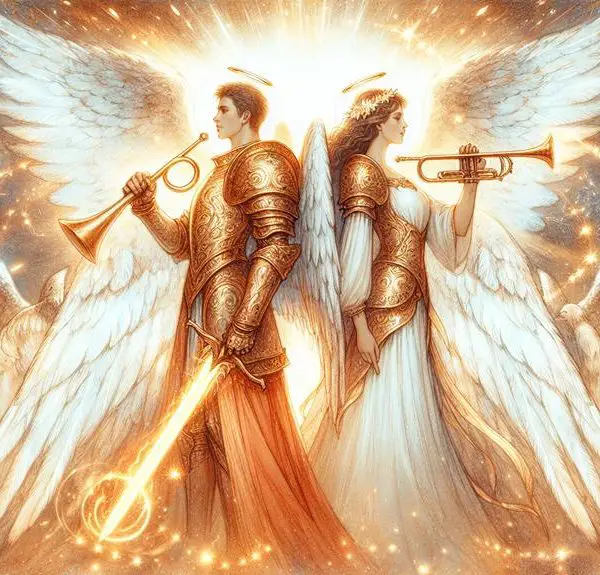

Sign up